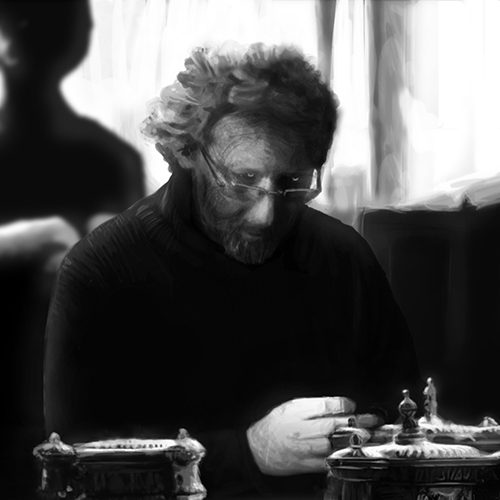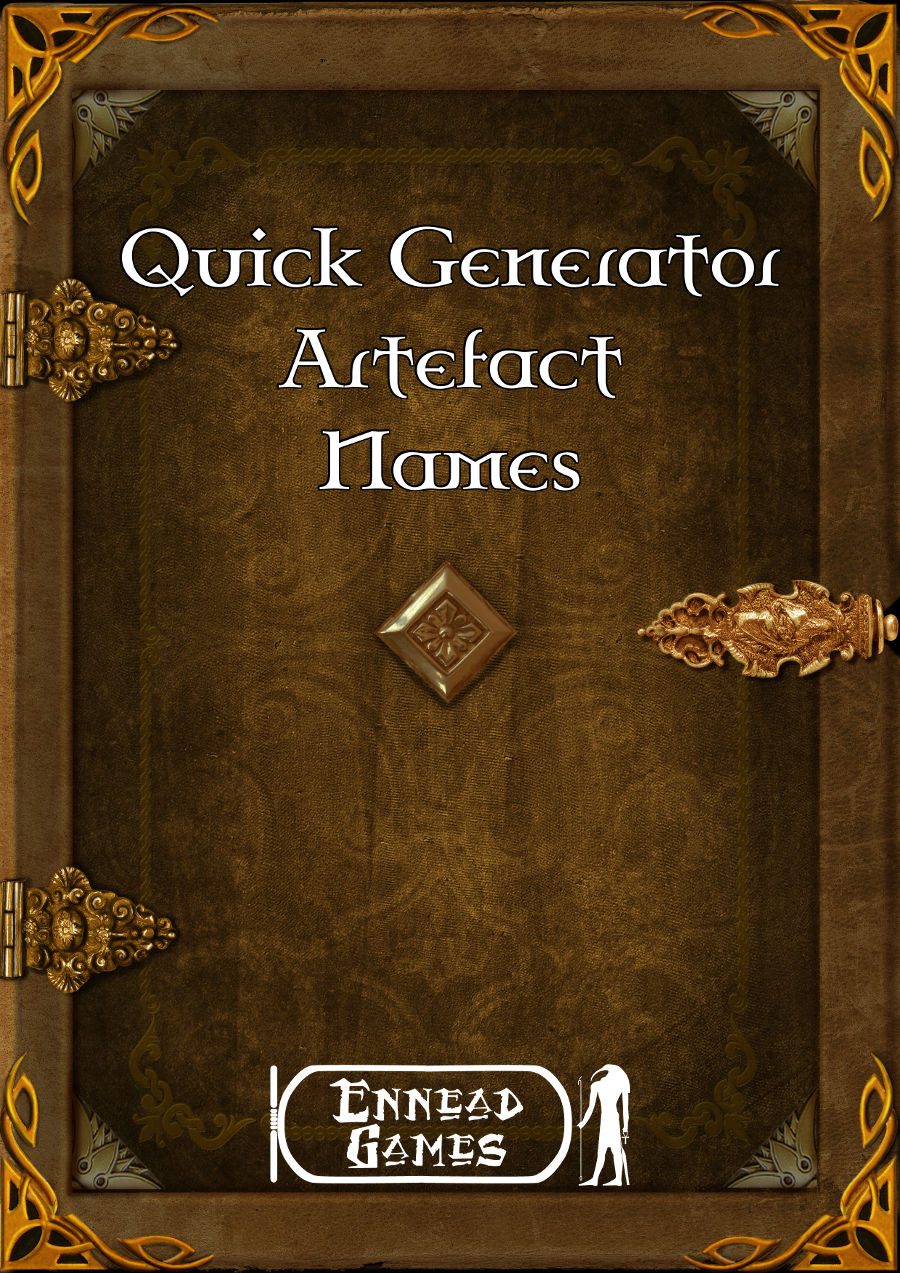
My Life with Leader: Interlocking Leadership Motivations
Phil Nicholls blogs at Tales of a GM, where he writes about narrative gaming, faster prep and more story. He is currently running a HeroQuest Glorantha campaign in a home-brew setting. Phil has written for Johnn Four’s Roleplaying Tips newsletter and has a selection of self-published pdfs.
This essay is taken from the archives at Tales of a GM.
One Interlude for our campaign involved playing My Life with Master. Even before generating the player character minions, the group is directed to create a Master. This is the villain who drives the minions to ever-greater acts of evil, until the pivotal moment of rebellion. During this creation, one of my Players pointed out the utility of the Master-generation process. I explore the method in this essay, but first, a brief introduction to the game.
My Life with Master
I bought this RPG in a bundle of indie games. My Life with Master focuses on villainy, self-loathing and unrequited love. It was written by Paul Czege and published by Half Meme Press in 2006. The Introduction describes the game as follows:
The desperate struggle to be decidedly human in the face of monsterizing forces and adverse circumstances is a timeless horror not restricted to any specific range of cultures or geographic locales.
Leadership Qualities
My Life with Master is a narrative game, and thus adopts a rules-lite style. Defining the Master focuses on describing their motivations. The categories used by Paul to outline the Master have broad applications. These categories are:
- Brain or Beast
- Needs
- Wants
- Outsiders
These fascinating traits can be used for leadership figures in any RPG, and are discussed in detail below.
Two further traits of a Master are Fear and Reason. These are given numerical values, and have a strong role in the mechanics of My Life with Master. However, the narrower focus of these last two abilities excludes them from this exploration of the broader categories.
- Brain or Beast
The first category for a Master is a binary choice which broadly defines the character of a Leader. The rules define this as a choice between:
whether the Master is immersed in the world of thoughts and words or the world of sensation, and how that colours the Master’s understanding of what motivates others.
Very often this choice will be clear from the character of the Leader. Wizards, philosophical dragons and good monarchs are clear candidates for beings Brains. Barbarians, tribal leaders, bestial dragons and despots are likely Beasts. The real value of this choice is when dealing with more ambiguous leaders. Nobles, demons and priests make interesting choices for either approach.
A Brain Leader will be thoughtful, strategic, cunning and philosophical. In contrast, a Beast leader will be aggressive, bloodthirsty, passionate and highly physical. While these are personal traits, they will also have an impact on the leadership style and strategies adopted by the leader.
- Needs
The second leadership category considers what the Leader needs. The concept was expressed in My Life with Master as:
Needs are understood to be what the Master would have from the Townspeople. And Needs are something that necessarily threaten the Townspeople in some way . . . even if only by representing new ideas.
To decouple this explanation from the gothic setting of the game, we should replace “Townspeople” with “world”. Needs thus represent the external objectives of the leader. In the case of an antagonist, this is likely to be a significant threat to the world. Yet, this attribute can also be applied to a benevolent leader, who might seek peace, trade or enlightenment.
To be clear, Needs are not focused upon a leader’s companions. This is an expression of a broader goal, and represents a driving motivation for the leader. These Needs are the long-term goal of the leader, and all their actions should work towards achieving this goal.
- Wants
In many ways, the leader’s Wants are similar to their Needs. Wants are more personal to the leader, and feed into self-worth and mental well-being. This is very much a personal goal for the leader. However, the focus of these Wants is on a peer group. The text summarizes Wants as:
what the Master would have from the Outsiders.
The question of the Outsiders is considered below, but the simple version is that they are peers of some sort. What does the leader want from her peers? A leader’s Wants answers the “why” of the Needs. They explain the motivation which drives these Needs.
Firstly, the identification of the Wants creates backstory and personality for the leader. This determines how the leader is portrayed during the game. Finally, it can suggest some interesting solutions to the threats facing the Heroes.
Clever Players who research the Lich King’s history might be able to end the invasion by negotiating with the Shadowed Cabal. This is the group of evil mages the Lich King is seeking to join. Clever negotiations can save the kingdom just as well as defeating the Lich King’s undead army.
- Outsiders
The final category for leaders suggested by My Life with Master draws the process further into the realm of setting creation. The Outsiders were mentioned above, and are described in the book as:
What ultimately drives a Master is the opinions of a group of other people.
These Outsiders are the peers of the leader, or at least perceived as peers by the leader. Fellow dragons, rival clan chieftains, the emperor or a cabal of necromancers could all be classified as the particular group whose approval the leader seeks. Consequently, the leader will always act to impress the chosen Outsiders.
Driven GMCs
The elegance of these leadership attributes is the way they interrelate. The tight package of attributes bind together a leader’s actions, personal goals, peers and outlook. By having these traits outlined, the GM can plan a leader’s strategy and improvise a roleplay encounter. These attributes also provide the GM with the tools to react to any actions by the Heroes.
The Needs of a leader trigger the events affecting the Heroes. In the case of an antagonist, these are the nefarious plans which the Heroes seek to thwart. The Outsiders present the Heroes with a range of opponents. The Wants of the villain open the door for some clever tactics by the Heroes: to simply outsmart the villain and nullify the threat by other means.
Likewise, for an ally leader, these attributes create a framework for the campaign. The Needs of an ally become the grand plans which Heroes work to fulfil. The Wants and Outsiders create the politics surrounding the ally, and act as the backdrop for courtly plots.
In all cases the Brain or Beast attribute decides the philosophy of the leader. It also serves to establish their basic personality and colours their tactics in all matters.
Conclusion
With these four simple attributes, Paul creates a flexible method to define the motivations of a leader. Stripped of the gothic overtones of My Life with Master, these attributes can be applied to leaders in any game.
How do you represent leaders in your game? Do you have any special traits for leaders? Share your thoughts with your fellow GMs in the comments below.
Happy Gaming
Phil
For more essays from Phil, and updates about his latest campaign, visit Tales of a GM.




One thought on “[Tales of a GM] – My Life with Leader: Interlocking Leadership Motivations”
Comments are closed.